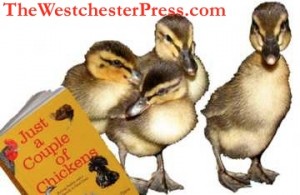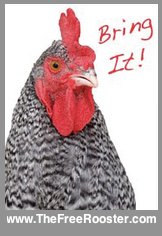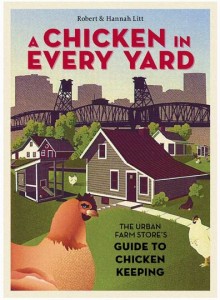
Me, Myself, and I are taking advantage of our opportunity to interview the author of “Just A Couple Of Chickens,” a book we wrote and self published. We’re not sure who that fourth duckling is…
The Westchester Press is pleased to present this exclusive opportunity to interview the author of “Just A Couple Of Chickens,” a funny and informative book about chickenistic and economic adventures that has sold over 1,500 copies so far and counting.
The author, Corinne Tippett, is here with us today – mainly because this is her blog and she is writing it. But enough about us, let’s get to the questions!
The Westchester Press: Thank you for being here with us today, Corinne. How is your book doing now that it has been out for almost two years?
The Author: You’re welcome! Thank you for the opportunity to talk about my book. It’s still selling pretty well, which is great for me and my publisher – I mean, for you, but one contributing factor is that the book talks about economic struggle and hardship, and I really thought it would be out-dated by now. But the theme is still current and all of us would like to see that change. Economic change.
The Westchester Press: We hear you there! High five on that one. Are you really working on a sequel? What’s taking so long on that?
The Author: Okay, so high five from self publisher to author is kind of more like clapping, don’t you think? And yes I really am working on a sequel and it takes as long as it takes, okay? For one thing, I had to finish my grandfather’s aviation history biography which I was supposed to write first but I did the chicken book instead, and for another thing, I really want a happy ending of total economic healing and it’s taking the whole country a while to get that going.
The Westchester Press: A new book? An aviation biography? Who is publishing that? Are we publishing that?
The Author: At this time, I am in the process of submitting my grandfather’s aviation biography to a traditional agent or traditional publisher. Because I think it’s a project that may be well suited for traditional publishing, and I’d welcome the team approach to producing it. But if that doesn’t come through, then I will certainly self publish, and you’ll be my first choice.
The Westchester Press: But you ARE a self publisher! You ARE The Westchester Press! How can you do this to us?
The Author: I don’t believe that self publishing and traditional publishing have to exclude each other. And once I self publish a project, I will continue to submit it to traditional publishers along with a sales count… and we’ll see what happens.
The Westchester Press: We need a minute, sorry for the delay. We’re looking up the word “fidelity” in the dictionary.
The Author: This seems to be going just as well as our quarterly company meetings. There’s no “i” in team, people. Okay, now you aren’t talking to me. So, now I’m not talking to myself? Isn’t that a good thing? arrite. Two can play at that game. I mean, one can…
okay.
fine.









